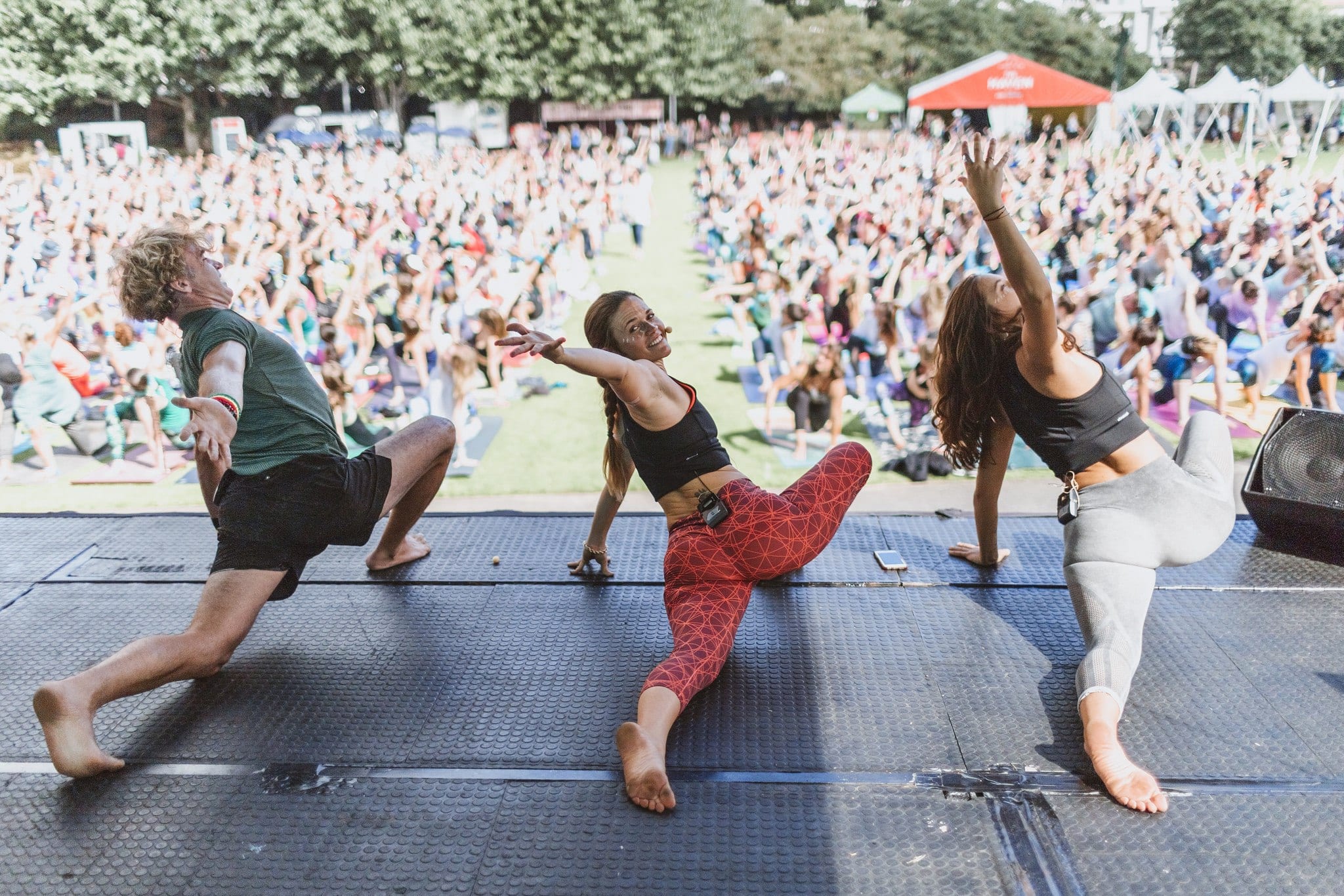
Yoga is everywhere these days—in gyms, in parks, on streets, and, of course, in studios. One of the more common types of classes offered in any of these places is a plain old Vinyasa Flow. Regardless of how ubiquitous the style may be, it can be difficult to truly understand its subtleties.
The Basics
The definition of yoga is “to yoke,” to join together. The linking of the breath and movement was developed in the Ashtanga system taught by Krishnamacharya who taught the grandfather of Ashtanga Yoga, Pattabhi Jois. Ashtanga yoga is a set series of postures linked together that purify the system by creating heat or “tapas” in the body, which literally translates as “to burn.”
Vinyasa means “step by step” or “to place in a special way.” In a vinyasa flow practice, movement is linked with breath. The sequence and postures, however, may change from class to class, incorporating a more creative combination of postures. This process anchors the mind and creates a moving meditation known as flow.
Starting with Surya Namaskar A, a class will usually include nine postures linked together with breath. The point of this process is to help warm up the joints and spine, increase blood flow, and create a connection to breath and body.
From here, a series of standing postures are intertwined while Surya Namaskar is repeated in between. The postures are held for several breaths in order to warm up the legs and the deeper muscles close to the spine for postures like backbends and inversions. At the top of the class, often called the “peak,” you’ll experience more intensity. If the sequence is taught well, a teacher can lead students to this point in a fluid way, creating a profound shift in the way one feels. The sequence can also lead you into poses you never thought you could do—the heat that is created helps you peel away tension and helps to connect you to that blissful place inside.
The Landing
At the end of a typical vinyasa flow class there will be some type of cool down, to help students prepare to rest in corpse pose: savasana. This is when the body rests and the mind gets still, prepping us for meditation. This is also when the exquisite release is experienced in the body, mind, and spirit, and bliss can radiate through your being.
Vinyasa flow can be fun, invigorating, creative, and a journey into the unknown. I love teaching this type of class because of the creative element, and the unlimited postures that there are to explore. These practices are meant to be repeated so our minds don’t have to think and we can focus on how our bodies feel as we move from pose to pose. Vinyasa flow can connect you to your spirit because of its meditative quality and the connection to the breath.
Pattabhi Jois often said, “step by step and all is coming.” Step by step we teach ourselves to stay in the moment, and experience change from a place of introspection that the breath guides us to. Only when we get out of our heads and into our bodies are we able to learn to flow with what the moment offers. This practice allows us to burn away the layers and congestion that block us from feeling our highest potential of love—including a deep self-love.
And that, ultimately, is what vinyasa yoga is all about.
—
 Joan’s grounded teaching style creates space for students to deepen their personal journey while aligning with teachings of true yogic traditions. Joan frequently shares her insight on the subject of health and wellness in national magazines and blogs, including Elephant Journal, Mind Body & Green, Yoga Journal, ORIGIN Magazine and Women’s Health. She currently has a thriving career as a Wanderlust Senior Teacher (E-RYT500) and leads yoga retreats, workshops, and teacher trainings all over the world, while maintaining a full yoga class schedule in Los Angeles.
Joan’s grounded teaching style creates space for students to deepen their personal journey while aligning with teachings of true yogic traditions. Joan frequently shares her insight on the subject of health and wellness in national magazines and blogs, including Elephant Journal, Mind Body & Green, Yoga Journal, ORIGIN Magazine and Women’s Health. She currently has a thriving career as a Wanderlust Senior Teacher (E-RYT500) and leads yoga retreats, workshops, and teacher trainings all over the world, while maintaining a full yoga class schedule in Los Angeles.